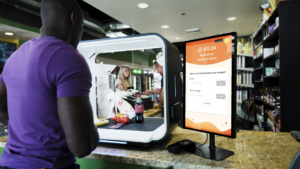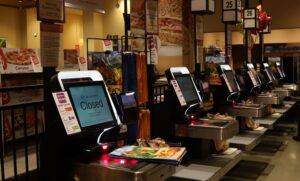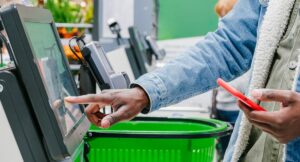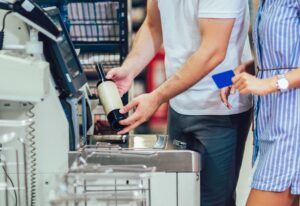



Self checkout (SCO) shipments could exceed 300,000 units by 2027.
In a sign of rising demand for self-checkout technology, self-checkout terminal vendors made 200,000 shipments internationally in 2021, but that number is expected to exceed 300,000 by 2027, according to RBR's Global EPOS and Self-Checkout 2022 report.
The global self-checkout market grew by 11% in 2021. Terminals that accept cash dropped from nearly 47% of total deliveries in 2020 to about 39% of total deliveries in 2021, according to the report.
Conversely, the number of cashless Self-Checkout terminals shipped increased from just over half to 61% between 2020 and 2021.
RBR, a London-based research and consulting firm founded in 1992, has identified several catalysts for the rise of self-checkout. Retailers in the Asia-Pacific region, primarily Australia, China, Malaysia and Indonesia, are driving growth by deploying the technology. In addition, rising minimum wages and labor shortages in Canada, South Korea, Poland, and other countries may further drive demand for self-checkout.
According to RBR's findings, more high-volume and specialty retailers are deploying cashless kiosks and redesigning their checkout areas to accommodate more self-checkout units.
In the U.S., retailers are also embracing self-checkout technology. Amazon has expanded its checkout technology to its own locations, including its Fresh grocery stores, and has also sold the technology to other retailers. Convenience store Hudson, for example, opened its first store using the technology at Dallas' Love Field Airport last year. Last month, Dollar General began testing self-checkout in about 200 of its 18,000 stores.
While retailers are increasingly adopting self-checkout technologies, research suggests that these tools can be improved. Six in 10 respondents in a 2021 Raydiant survey said they preferred self-checkouts to store employees, but 67% said a self-checkout had malfunctioned when used, and 65% were concerned about its cleanliness.
SCO technology is advancing in other ways. We're already seeing some self-checkout terminals recognize items so consumers don't have to scan them. Other technologies, such as facial recognition for payment validation, are also in development.
Self-checkout vendors are also developing technologies to accurately detect items and verify customers' ages when purchasing age-restricted items.
Traditional self-checkout technology is not sufficient when customers want to purchase age-restricted items, such as alcohol or prescription tobacco. These items typically require an employee to verify the customer's identity and validate the purchase, creating bottlenecks that can slow down lines, frustrate harried customers and reduce the labor-saving benefits of automation.